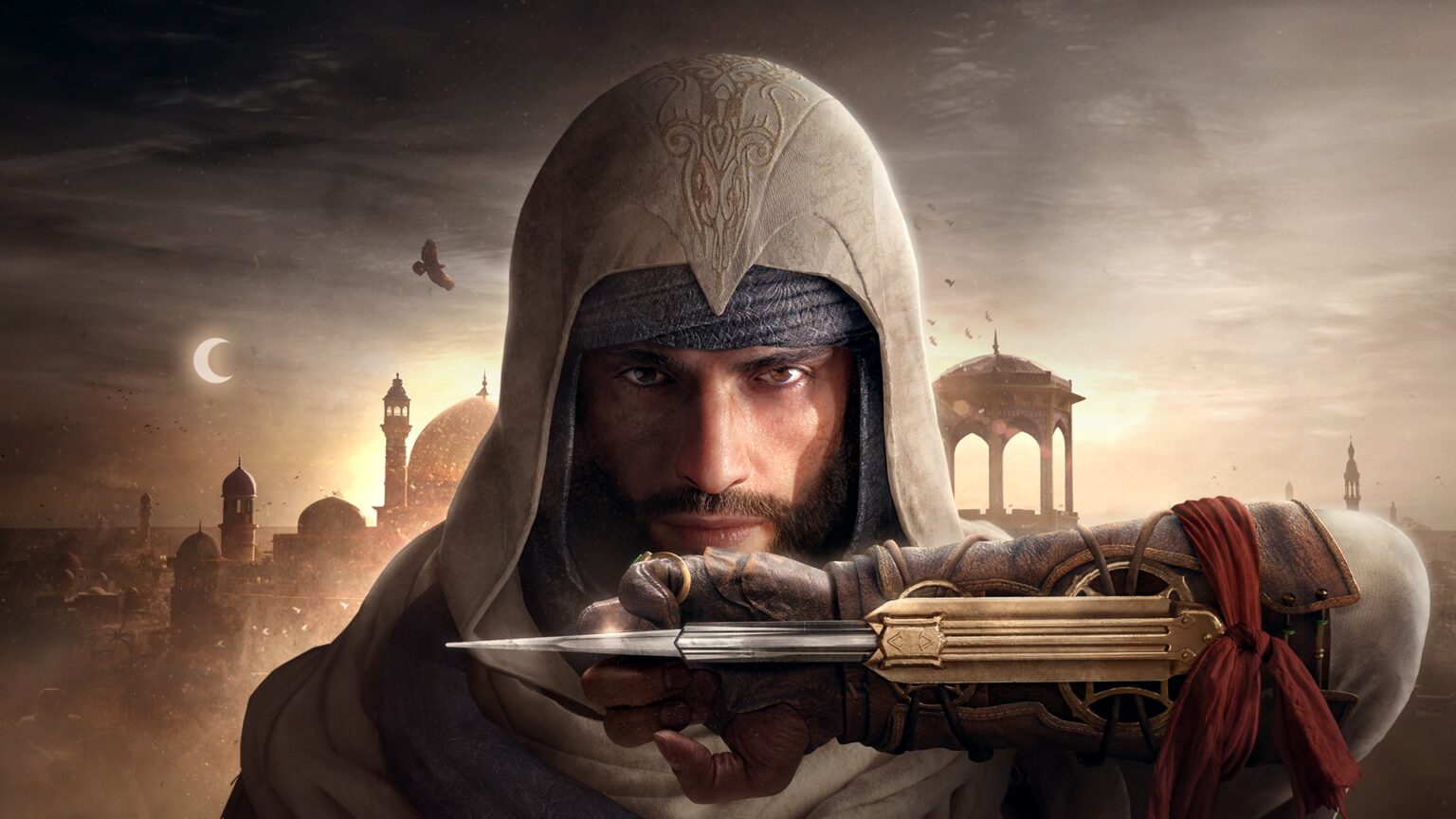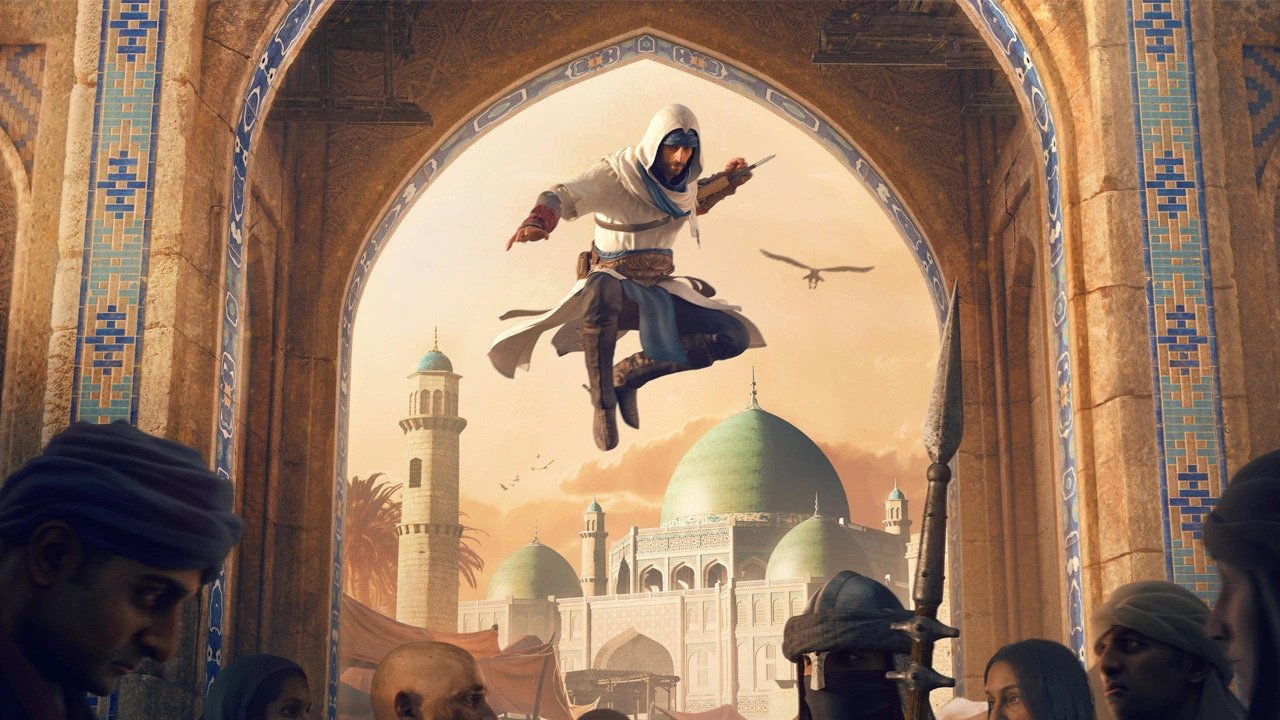The 21st installment of the Assassin’s Creed franchise, titled Mirage, will release on October 12 and is meant to return the franchise to its roots. However, when we see the game in action, it boasts mechanics that don’t accompany the style or tone of the original. The game’s look and advertising are a mirage that exploits nostalgia for a quick cash grab.
Assassin’s Creed is an iconic franchise that has undergone a notable evolution from its initial four games. A modern-day protagonist would use a machine called the Animus to relive the life of their ancestors. Thus, players would assume the roles of various assassins throughout history, united by their affiliation with the secretive Hidden Ones. The gameplay offered a captivating blend of strategic parkour, adeptness in social stealth, deft pickpocketing, and precise assassinations. These thrilling adventures unfolded within meticulously crafted open-world cities, providing an immersive setting for character development and a fascinating storyline tied to player progression.
The most recent additions to the Assassin’s Creed series, namely Odyssey and Valhalla, marked a significant departure from the traditional formula, transforming the franchise into full-fledged Role-Playing Games (RPGs) complete with loot systems and dialogue trees. These games shifted the focus towards combat and action, prioritizing the experiences of a mercenary or Viking protagonist rather than the hooded assassins that defined the earlier titles. Consequently, the essence of an “Assassin’s Creed” game seemed diluted, with the gameplay centering more on Viking themes rather than the core tenets of the franchise. While the character Basim appeared in Valhalla, he assumed a secondary role, frequently interacting with a group of Vikings. Initially conceived as an expansion for Valhalla, Assassin’s Creed Mirage, which would feature Basim as the playable character, evolved into its own standalone game during development, expanding the narrative and scope beyond its original intention.
Assassin’s Creed Mirage transports players to 861 Baghdad, where they assume the role of Basim ascending the ranks within the Hidden Ones’ order. This premise harkens back to the early days of the franchise, reminiscent of Altair’s journey as a young initiate learning the ways of the Assassins. The marketing campaign for Mirage heavily emphasizes this return to the series’ roots, tapping into the nostalgia of long-time fans. One notable tweet from the official Assassin’s Creed account exclaims, “The aesthetic, the vibes, the feels, Welcome back to the Assassin’s Bureau!” Accompanying the tweet is a video showcasing a parallel between Altair’s entry into the Assassin Bureau in the original game and Basim’s similar arrival. Another tweet boldly declares, “The franchise is returning to its roots on October 12, with Assassin’s Creed Mirage designed as a homage to the first games of the series.”
While the marketing of Assassin’s Creed Mirage may create an impression of a nostalgic return to the franchise’s roots, there are valid concerns that it may not deliver the experience fans are hoping for. Despite the presence of a hooded character and a compressed map, the game heavily relies on the Valhalla formula. It is important to acknowledge that Mirage was originally intended as a DLC for Valhalla rather than a standalone game, indicating that it was not entirely rebuilt to resemble the original entries. The similarities in setting and character may give the appearance of a return to form, but the underlying mechanics still align with Valhalla’s RPG-focused design.
Additionally, it is worth noting that the franchise has other large-scale Assassin’s Creed RPGs in development, such as Codename Red and Codename Hexe. This suggests that the series as a whole is committed to the RPG format, making it unlikely that the game design will drastically change for a single installment. A closer examination of the Mirage gameplay reveals that the UI, movement, and animations closely resemble those of Valhalla, which further strengthens the argument that Mirage shares the DNA of its predecessor rather than genuinely replicating the distinct feel of the original games.
The clearest deviation from the originals is the inclusion of supernatural elements in Valhalla and Odyssey, which is antithetical to the core concept of Assassin’s Creed as a historical fiction franchise. In the case of Assassin’s Creed Mirage, the shock of your character teleporting further exemplifies the departure from the original games. During the gameplay presentation, instead of employing clever tactics to separate and eliminate three enemies, Basim simply assassinated one and teleported to the remaining two, swiftly dispatching them. While it is important to acknowledge that game design evolves and experiments over time, the inclusion of supernatural abilities in recent entries challenges the authenticity and historical grounding that initially defined Assassin’s Creed.
The presence of rewards such as wood and iron, indicating a potential loot or crafting mechanic, is another departure from the original design. Crafting and looting mechanics are commonly associated with RPGs, where players can build and customize their weapons and equipment to suit their preferred playstyle. In contrast, the original games focused more on exploration, missions, and side quests, with rewards and upgrades typically obtained through story progression.
The introduction of crafting and looting systems brings advantages and disadvantages to the gameplay experience. On one hand, it allows players to have more control over their character’s gear and stats, creating a sense of personalization. However, it also introduces a constant management aspect where the character’s power level becomes reliant on the quality of their armor and weapons. This can lead to potential issues, such as falling behind in power and being unable to participate in certain parts of the game. While it is too early to draw definitive conclusions, the presence of these materials does indicate that Mirage may incorporate RPG elements more prominently than the marketing has let on. This could have implications for the overall gameplay experience, particularly for players who prefer a simpler open-world approach without the complexities of crafting and loot systems.
Lastly, synchronization played a vital role in the early Assassin’s Creed games, as it was intricately tied to the concept of the Animus and replicating the lives of one’s ancestors. The health bar, in essence, served as an indicator of accuracy rather than traditional health. Breaking synchronization through actions like taking damage, falling, or failing stealth encounters meant deviating from the footsteps of the ancestor, ultimately resulting in desynchronization.
Unfortunately, the newer Assassin’s Creed games have moved away from emphasizing the concept of synchronization, leading to a loss of the distinctive lore that made the original games so unique. This departure is evident in Assassin’s Creed Mirage, notably in the Deluxe Edition’s inclusion of Prince of Persia cosmetics. While the Prince’s outfit, Sand Sword, and Dagger of Time may be a playful nod to a game with a similar setting, their presence contradicts the idea of synchronization and historical authenticity, further distancing the game from its initial marketing promises.
The notion of scaling back Assassin’s Creed holds promise, especially considering the dissatisfaction that arose from the bloated and sprawling nature of Odyssey and Valhalla. However, it’s crucial for fans to have a clear understanding of what they are actually getting. Assassin’s Creed Mirage may not be a complete return to the elements that made the franchise great. Rather, it appears to be Valhalla’s core design dressed up to resemble the original Assassin’s Creed, creating a mirage of the beloved experience.
Stay tuned at Gaming Instincts via Twitter, YouTube, Instagram, and Facebook for more gaming news.
No related posts.







